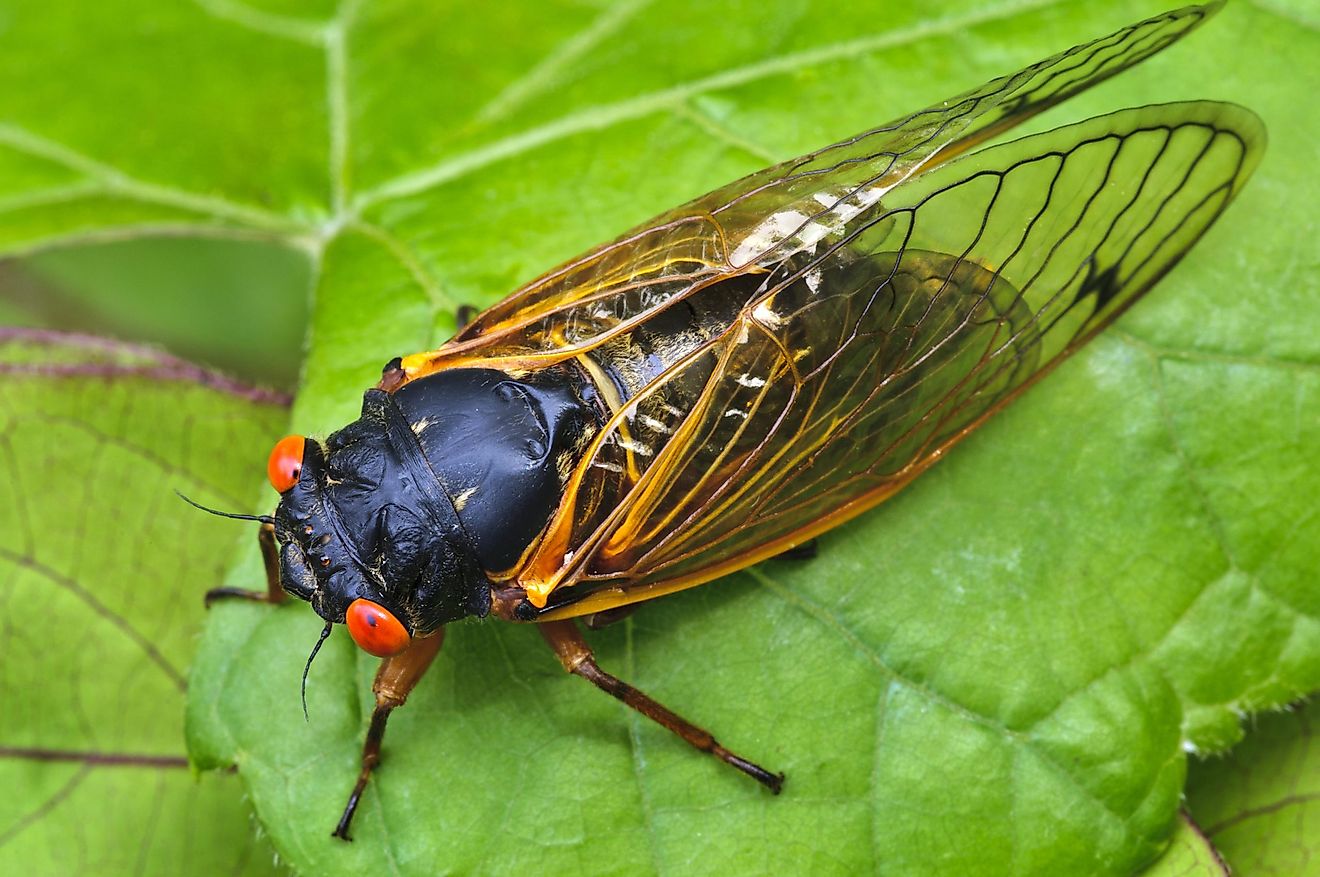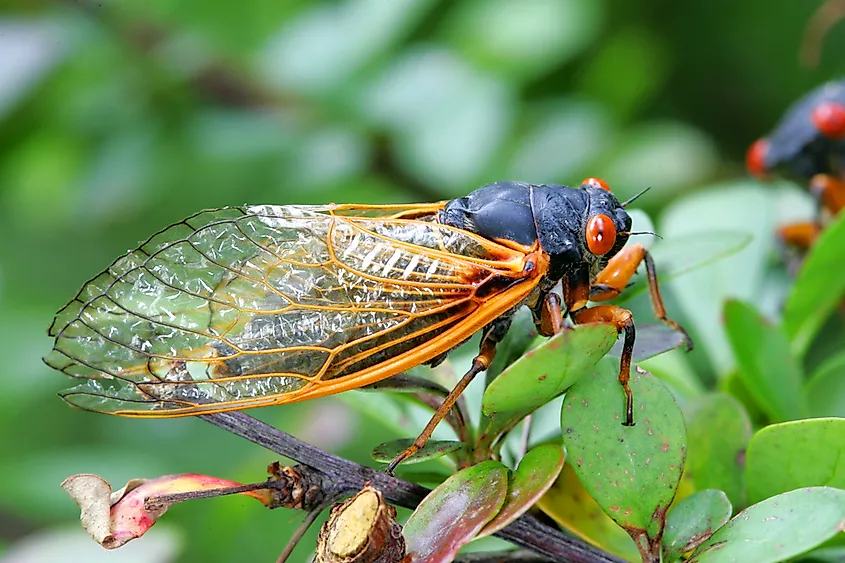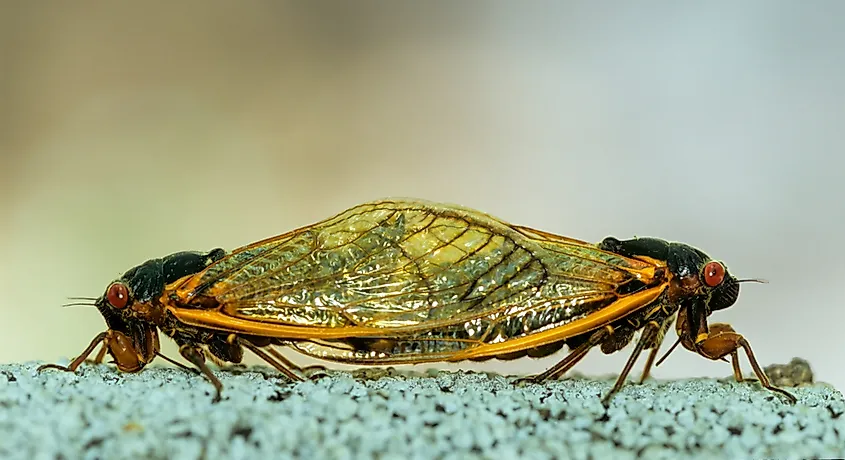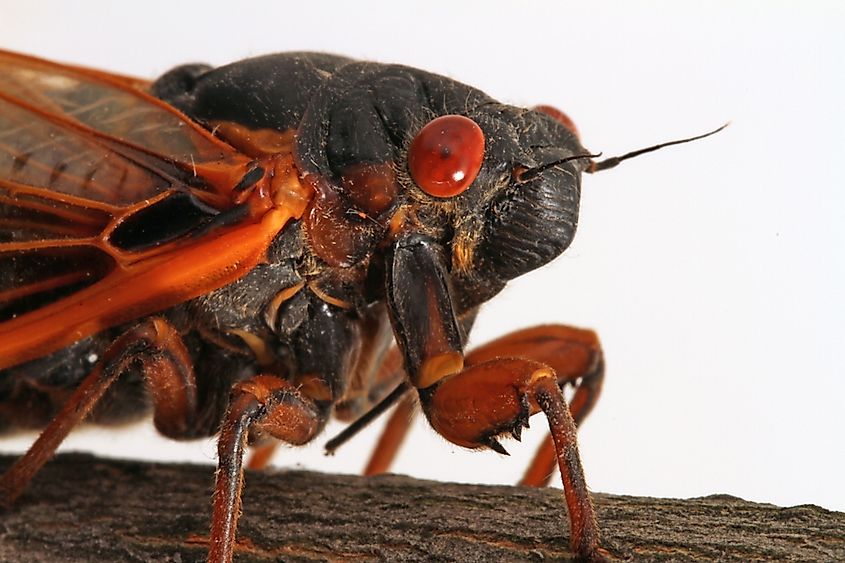What Are Periodical Cicadas Famous For?

- Some periodical cicadas emerge 1 or 4 years early or 1 or 4 years late due to an error in their maturation process: these cicadas are called Stragglers.
- Cicadas in sunny areas of your yard will emerge before cicadas in shady areas. Cicadas in the southern-most states will emerge before cicadas in northern states.
- Cicadas are edible and are widely collected by gourmands and local tribes across the US. They are described to taste a bit like asparagus.
Periodical Cicada or Magicicada emerge every 13 and 17 years in Eastern North America. They are sometimes inaccurately called “locusts,” which is a misnomer; Cicadas are true bugs, while the real locusts are grasshoppers. Adult periodical cicadas are over an inch in size, are black on top and orange below, with red eyes and transparent wings. Their wingspan can reach up to 3 inches.
Why Are These Cicadas Called Periodical?
Periodical Cicadas have a unique synchronized and mostly-“invisible”-to-the-human-eye lifecycle. They spend almost entire life underground in the larval and nymph forms and emerge to live through the adult part of their lifecycle every 17 and 13 years according to it their species. Under the soil, they live in small burrows feeding on fluids from the tree roots.
In spring, they emerge from the soil to spend several weeks above the ground. In most years in the US, it is typically April-May in the far South and May-June in the far North, and die out by mid-July. Emerging nymphs climb on the branches of the nearest shrub and bushes where they remain while maturing into adults. After their last molt, they spend a little less than a week waiting for their exoskeletons to harden, changing from white to dark color. When that happens, they are ready to mate.

Males form groups and attract females with loud sounds. After mating, the female creates little burrows in branches and lays eggs: the last act of her short adult life. When the eggs hatch, the larvae fall to the ground and burrow into the soil. This brood will emerge exactly after a period of 13 or 17 years, which is why the name is “periodical.” Annuals cicadas that appear yearly exist as well, and they emerge every year.
Where Are Periodical Cicadas Found?
Each brood has its designated area as they never move away as adults. All of them are concentrated in Eastern to Mid-Western states. The 17-year periodical cicadas are mainly found in the east and Great Planes, and the 13-year cicadas - mostly in southern and Mississippi Valley states, with minor overlaps.
“When” is also a good question as each brood emerges at a specific year unless it dies out. Scientists maintain maps and calendar of the known broods that are easily found online. The history of emergencies starts with 1893; initially, there were 30 broods; only 15 have survived until our days.

The trigger for the emergence is the soil temperature: when the soil 8 inches below the surface reaches 64 degrees Fahrenheit, they start digging their way to the surface. After a warm rain, the emergence is most likely.
Why Some Broods Went Extinct?
In their adult form, cicadas become a feast for pretty much every insectivorous creature from birds to cats. Because they are helpless to protect themselves or escape, they use the survival strategy of predator satiation. They emerge in millions, and even when many of them are eaten, there are enough left to ensure the continuation of the species.
Even though the adult form copes relatively well, the immature form has to manage to survive from 13 or 17 years in the soil in a particular area. Pesticides and chemicals sprayed onto the ground, and sipping through with the rainwater can quickly kill them.
Cicada Chorus
The short adult life of cicadas serves a single purpose: reproduction. To attract females, the males form groups called “choruses” and “sing,” or rather, “play” a concert using their timbals. Choruses can be thunderous, reaching 100 dB under the chorus trees.
Different species have distinct calling songs. The call of Decim periodical cicadas is considered to be similar to “pha-ra-oh” sound. The Cassini and Decula periodic cicada choruses produce alternating ticking and buzzing. Also, each male has a courtship song for an individual female, which is different from the “calling” song.

The Impact Of Cicadas
Cicadas are most beneficial, harmless, and are not much more than a nuisance. They aerate the soil, and their bodies are a source of nitrogen for the trees. The immature forms are food for moles and digging animals.
Cicadas cannot bite and do not sting. They have a mouth suitable for piercing the tree branches to suck the sap. If handled roughly, they might pierce human skin, which is painful but not harmful. These cicadas are not venomous, and there is no evidence of them transmitting diseases since they only feed on clear sap from trees.











